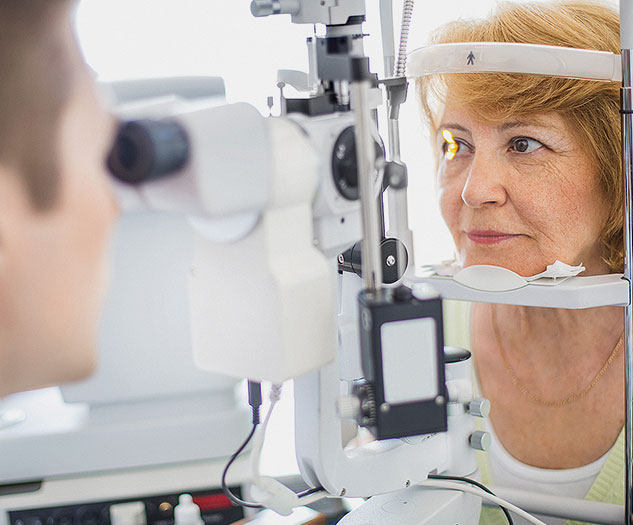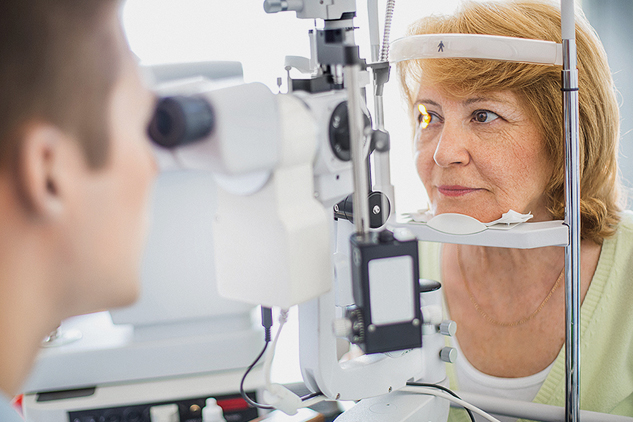
Common vision problems
Short-sightedness, or myopia, is when our distance vision is blurred. It commonly occurs at a young age can be corrected with glasses and contact lenses. Glasses may be needed all of the time or for specific things like driving, watching television.
Long-sightedness, or hyperopia, affects our ability to focus.This can affect our close vision and distance vision. Glasses or contact lenses may be needed all of the time or for near work such as reading, writing, phones and computers. A lot of children are slightly long-sighted and often do not require glasses unless it is causing a problem.

Cataracts
Cataract is when the clear lens inside the eyebecomes cloudy. This normally happens due to age, however, poor diet, smoking and exposure to the sun or UV light can also cause cataracts. Some health conditions such as diabetes (link) and taking certain medication namely steroids can cause cataracts. They can also occur from having eye injury or surgery and uncommonly in children.
Most people who have early cataract may notice their glasses prescriptionchanging more regularly. This normally happens gradually but can also occur quickly if due to an eye injury. As vision changes it can become misty or less clear. In particular people can notice blurred vision in the sun, at night and can notice glare. Car headlights can also appear dazzling and certain objects less colourful.

Dry Eye
There is a natural tear film that covers the front of our eye keeping it comfortable. Dry eye is whenthe tear film is not protecting the eyes properly, leading to uncomfortable, gritty, burning and irritated eyes. In severe cases, dry eye can be painful and cause longstanding damage to the surface of the eye. This can result in the eyes become inflamed.
If your eyelids are sore, hot, crusty and red you may also have Blepharitis, a condition where the eyelids become inflamed and sore. It is quite common to have both, blepharitis & dry eye.

Glaucoma
Glaucoma is the name given to a group of eye conditions that damages the optic nerve at the back of the eye. It can be linked to high pressure of fluid within the eye, although this is not always the case.
There are two main types of glaucoma: acute closed angle glaucoma and chronic open angle glaucoma. Acute glaucoma is when due to a rapid rise in eye pressure the optic nerve is damaged immediately. Chronic glaucoma is where due to normal or a slow rise in pressure the optic nerve is slowly damaged resulting in a gradual loss of vision. If left untreated glaucoma can cause sight loss. Approximately 10% of the UK’s blind registrations are due to glaucoma.

Flashes & Floaters
Flashes & floaters in our vision are normally harmless and somewhat common.
Flashes of light can appear in our vision when the jelly inside the eye shrinks and tugs on the retina, the light-sensitive layer at the back of the eye. This is different from visual disturbances caused by migraine.
Floaters are dark shapes or spots that can appear as ‘lines’ or ‘cobwebs’ in our vision. They are normally caused by clumping of cells in the clear jelly inside the eye casting shadows on the retina (the light-sensitive layer at the back).

Macular Degeneration
The macula is the central area at the back of the eye that is responsible for detailed vision such as reading, writing and recognising faces.Age-related Macular Degeneration (AMD)occurs when the macular becomes damaged. There are two types of Macular Degeneration(AMD): Dry and Wet.
Dry AMD - is when waste products build up at the macula. In its early stages, Dry AMD has little effect on vision. However as the condition gradually worsens people tend to notice a slow change in vision. They may have difficulty reading, with subtitles or signs. Dry AMD can become Wet AMD.

Diabetes and your Eyes
Diabetes is a health condition where due to a lack of insulin, the body cannot cope with the level of sugar and other carbohydrates in the diet. Studies suggest that over 4 million people in the UK are affected by diabetes. Diabetes can occur in childhood but more commonly later in life, and can cause complications which affect different parts of the body. Diabetes can have an impact on our sight and can put you at a higher risk of developing certain eye conditions such as dry eyes, cataracts and glaucoma.






